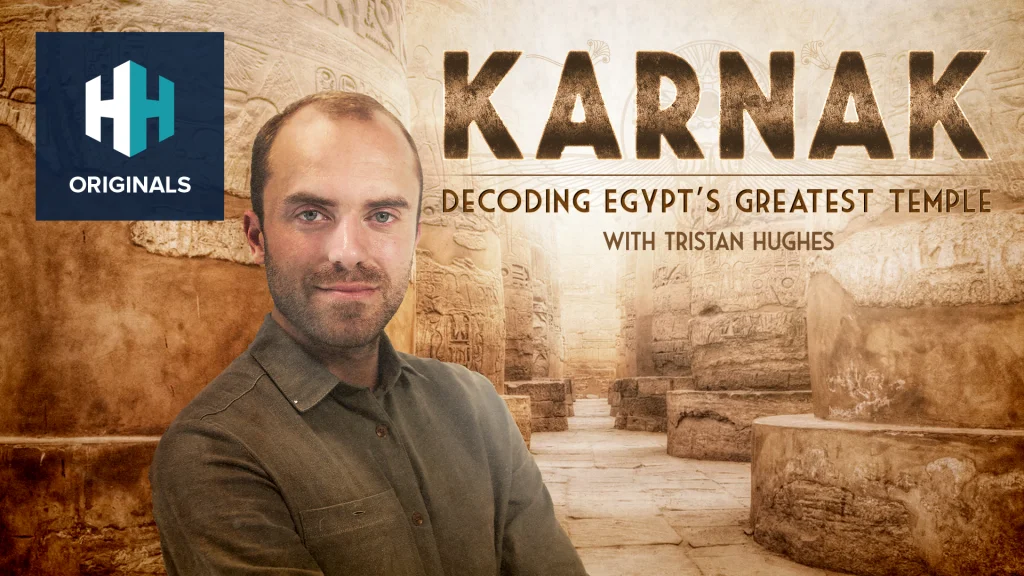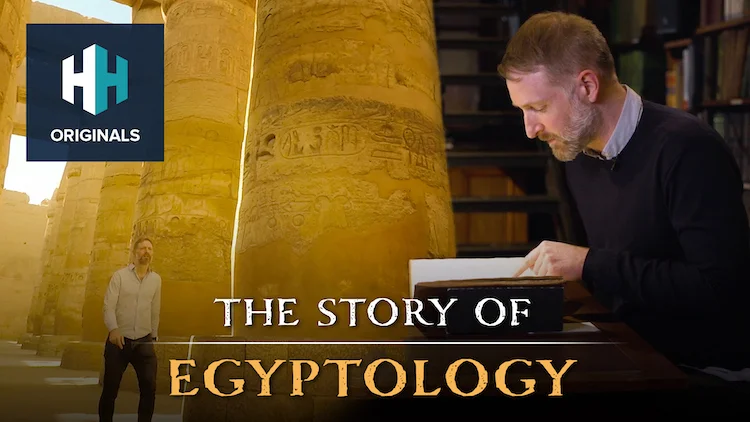[adthrive-in-post-video-player video-id=”n2ZsOl4l” upload-date=”2022-03-29T08:45:21.000Z” name=”The Treasures of Tutankhamun” description=”” player-type=”default” override-embed=”default”]
It was only since the 1922 discovery of his tomb that he has become the most famous Egyptian of all. Here are ten key facts about Tutankhamun, the ‘boy king’.
1. Tutankhamun wore orthopaedic sandals
Tutankhamun was buried with 130 walking sticks to help with his clubbed foot, which he often wore orthopaedic sandals for. These sandals had paintings of his enemies on the soles, so he could always trample on his foes. He had large front incisors and a huge overbite, a characteristic of his family.
2. Tutankhamun’s carpenters did a botched job
When Tutankhamun was buried, his mummified bodied was laid within a nest of three golden coffins, like a set of Russian dolls. When they tried to fit these inside the stone sarcophagus, the largest coffin proved to be too big. The toes peeked out and prevented the lid from closing.
The coffin’s toes were cut away by carpenters, who in their hurry, left the shavings at the floor of the sarcophagus. 3,000 years later, Howard Carter discovered the cut off pieces, the first person to realise they never bothered to tidy up.
 Listen Now
Listen Now3. He loved ostrich hunting
The boy king was often found to be hunting these huge birds in the region of Heliopolis, near modern-day Cairo. He was buried with an ostrich fan which would have held 42 alternating brown and white feathers. Although these feathers decayed long ago, the handle depicts the king setting off in his chariot to hunt, and on the reverse, returning in triumph with his prey.
4. No one knows how the boy king died
An x-ray from 1968 found inter-cranial bone fragments, prompting the theory that he was murdered with a blow to the head. However this damage seemed to be the result of the modern unwrapping.
In 2013, because parts of the chest wall and ribs are missing, a theory emerged that the king had died in a a chariot accident. But when the body was photographed at the time of Carter’s excavation in 1926, the chest wall was still intact. The damaged chest wall seems to have been inflicted by robbers during the theft of the beaded collar.

Tutankhamun’s mummified head.
Image Credit: CC BY 4.0.
It’s also possible the young king died from natural causes. Some think he contracted malaria, and he is likely to have had a bone disease or an inherited blood disease.
5. He was not always called Tutankhamun
At birth, he was named Toutankhaton, meaning ‘living image of Aton’, referring to the sun god. When he ascended the throne, he changed his name to Tutankhamun, meaning ‘living image of Amon’ – the king of the Gods. This may have been to disassociate with the reign of his father, King Akhenaten.
 Watch Now
Watch NowAkhenaten had tried to shift the culture away from Egypt’s traditional religion of polytheistic worship, which had been unpopular. After his death, his monuments were dismantled and hidden and his name excluded from the king lists. Perhaps it’s no surprise his son wanted to keep his distance.
6. The Egyptians didn’t even call him Tutankhamun anyway
Egyptian kings had five names, and the last two were the most important – the prenomen and the nomen. These were the names written on monuments. So, although we know him by his nomen, Tutankhamun, the Egyptians knew him by his prenomen: Nebkheperure.
7. He was surrounded by jostling political advisers
Tutankhamun’s father died when he was 7, leaving his young son to rule from the age of about 9 until 18. The youth of the ‘boy king’ was taken advantage of by several powerful viziers, his high-ranking political advisers.

Tutankhamun’s throne was discovered by Howard Carter.
Image Credit: Yveke / CC BY-SA 2.0.
One of these was Ay, the possible father of Nefertiti, who was Tutankhamun’s mother. It was Ay’s idea to distance the new rule from the unpopular changes made by King Akhenaten, and he reverted the kingdom back to the old religion and made Tutankhamun change his name.
The military commander Horemheb was also a powerful influence.
8. He married his half-sister
When Tutankhamun became king, he married his half-sister, Ankhesenpaaten. She later changed her name to Ankhesenamun, in accordance with political changes to worship Amon, the king of the Gods.
Tutankhamun and Ankhesenamun had two daughters, neither of whom survived infancy. The two mummified babies in Tutankhamun’s tomb are mostly likely these two daughters.
9. Memory of his reign was obliterated after his death
Tutankhamun’s death brought an end to his bloodline, as his two daughters didn’t reach infancy. His powerful adviser, the Grand Vizier Ay, ruled for four years, followed by the army chief, Horemheb.
Horemheb, the last king of the Eighteenth Dynasty, went about tarnishing Tutankhamun’s legacy, and replaced Tutankhamun’s name with his own on many monuments: Egyptian damnatio memoriae It was only when Tutankhamun’s tomb was discovered did he become the most famous pharaoh of all.
10. His DNA has helped identify other mummies
Since Howard Carter’s discovery of the tomb, researchers have conducted a DNA examination of the king’s body, allowing them to create a family tree spanning back five generations.
The tests have been used to identify other mummies, including Akhenaten as his father, Amenhotep III as his grandfather and Queen Tiye as his grandmother.
 Watch Now
Watch Now













